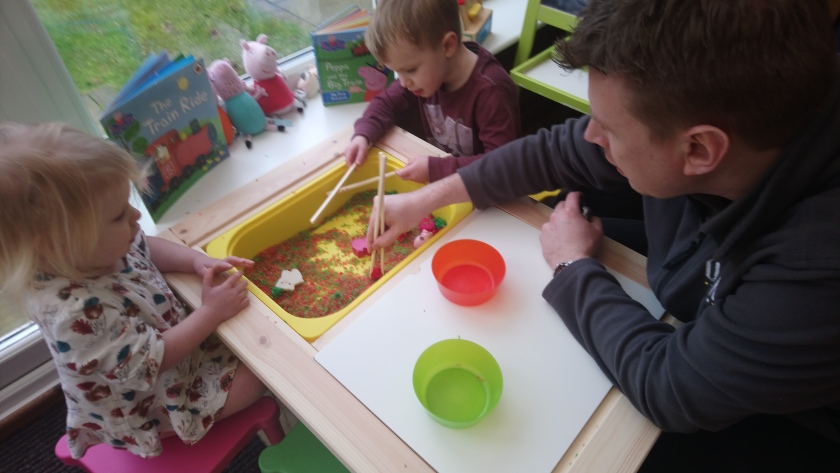All of my children currently have Next Steps related to their gross and fine motor skills, including encouraging tripod grip and using scissors safely, so this seemed a good opportunity to break in my new Flisat table with trays underneath for messy play.
I set up the following activities, which I will run you through now, along with my reasoning for choosing them (the current topic is Chinese New Year, hence the pigs and colour scheme!)
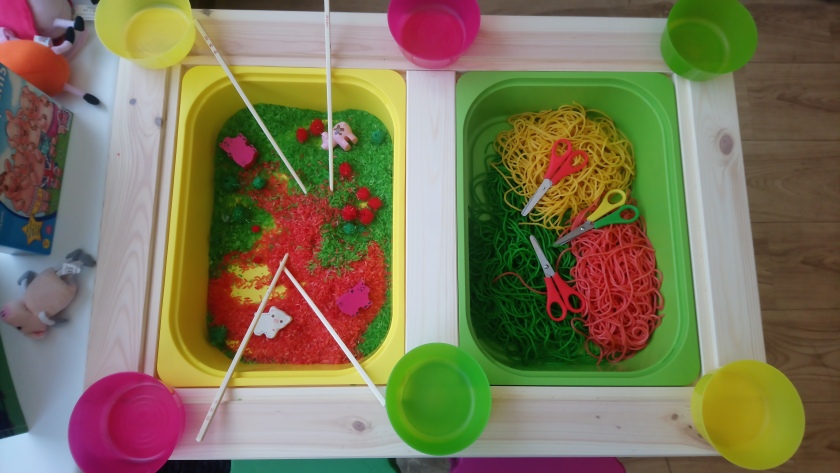
Coloured rice with chopsticks, bowls, pigs and pom poms
The rice itself is remarkably easy to make, if a little time consuming. Simply mix a little food colouring (gel gives a more intense colour than the watered down bottles) with vinegar in a bag and add the rice. The colour will intensify the longer you leave the rice in there for. Once ready, tip onto a baking tray and dry out in an oven on low heat, or leave to dry out naturally, though this can take a few days. Once dry, the rice will store for months in an airtight container; I tend to batch make a few kilograms in different colours, then it’s ready to use as and when
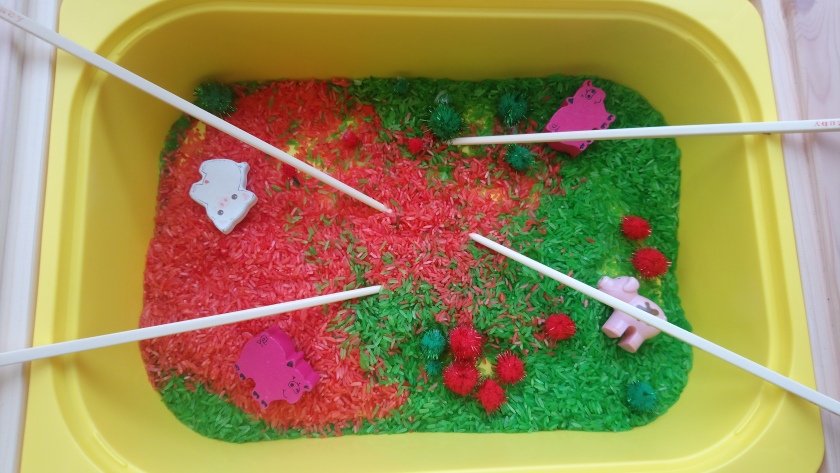
Younger children can make patterns in the rice with the chopsticks or their hands, older children can demonstrate fine motor skills in using the chopsticks to pick up the pom poms, and copying simple Chinese patterns drawn on the blackboard behind the table; I also encourage the older children to hold the chopsticks like a pencil when drawing shapes in the rice. My eldest is currently improving his letter formation as he writes certain letters backwards, and shaping the letters using large movements in the rice helps him to understand the shape of the letter more easily when writing on paper

The pigs and poms in there can be hidden, collected or used in pretend play and give lots of opportunity for conversations, including counting, colour matching, size, shape, texture… the list goes on. They give lots of opportunities to ‘wonder’ aloud whilst the children are playing, for example, ‘I wonder how many green pom poms I can find’ or ‘I wonder why this pig is covered in mud’ and the children will also generate their own conversations with each other and with me
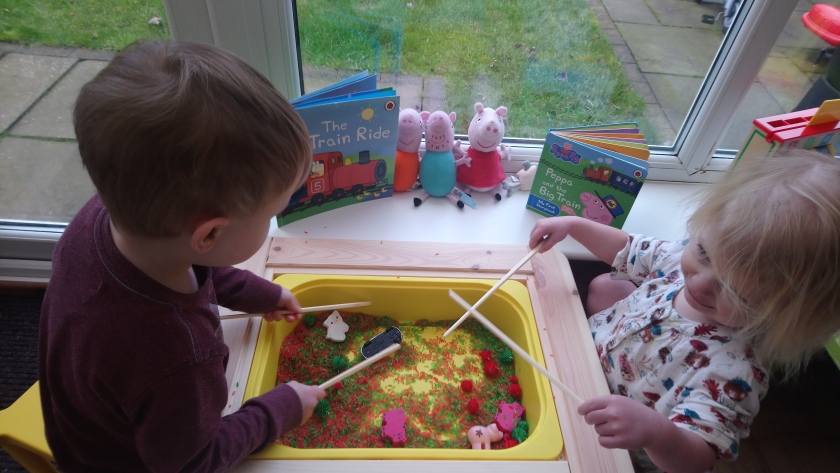
Coloured spaghetti with scissors
Again, the spaghetti is simple to make, simply add food colouring to the water when boiling the spaghetti. I would advise adding a drop of oil to the saucepan too, as this coats the strands of spaghetti and stops them sticking together. Once cooled, the spaghetti can be stored in the fridge for a few days, although if you have children who will eat it, use it sooner rather than later
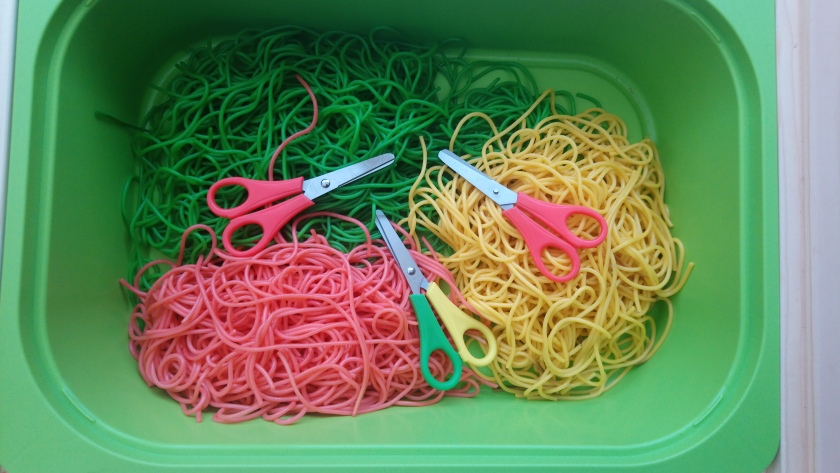
The main premise of this activity is for the children to cut the strands of spaghetti using the scissors provided. You will notice that there are two different types of scissors in the tray; the green and yellow pair are left-handed as I have one little boy who is already showing a dominant left hand at just over two years of age. I cannot emphasise how important left-handed equipment is for children who are showing a preference for their left hand, both in terms of safety and confidence, but that’s going to be a whole other blog post!
The emphasis of this activity is two-fold; holding the scissors correctly and cutting safely, especially if other children are playing nearby. Modelling good practice is recommended in situations like this, so I tend to sit nearby and start cutting the spaghetti myself to demonstrate the process safely. It also means I can give gentle encouragement and guidance at the same time. My daughter tends to turn her hand over whilst cutting, so sitting alongside and modelling correct procedure means I can support her to hold the scissors straight without her realising I am helping and going off in a strop!

One of the older children I look after is struggling with holding writing equipment with a tripod grip, and as he is going to school in September I am keen to work on this with him; this currently involves doing lots of different exercises to build up his hand muscles. Squishing and releasing the spaghetti in his whole hands is both beneficial and fun, and the activity can be extended to picking up individual strands in thumb and forefinger. His younger sister also enjoys the sensory experience of playing with the spaghetti, including eating it!
I obviously have to be careful when the children are using scissors and supervise the activity carefully, especially when the baby is playing at the same table. The Flisat table has lids which can easily be put on to cover the trays when not in use, or if I need to leave the children for a couple of minutes
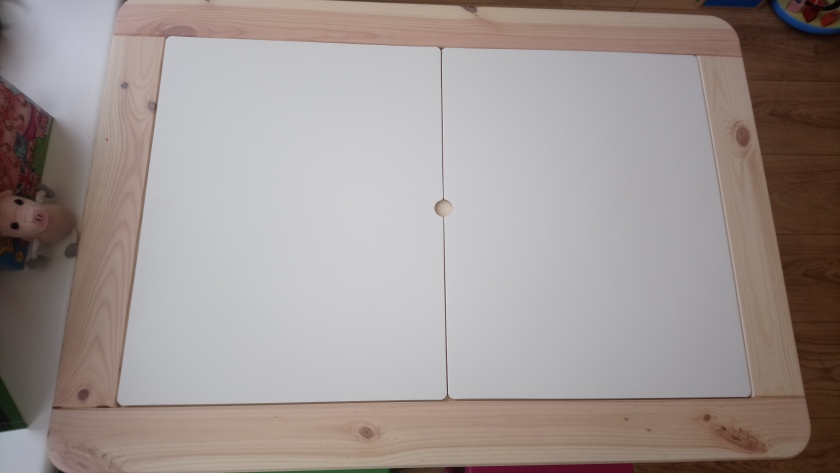
Extension & Adaptation
The activities above are easy to extend and adapt depending on your children. You could add measuring and pouring tools. You might prepare different colours to match themes throughout the year, for instance, green for St Patrick’s Day. You could even hide objects in the food for the children to find, for example mini easter eggs or small magnets to find with a larger magnetic wand. One of my older children has a Next Step to sequence the numbers 1-5 and then 1-10; I could hide the numbers in the trays so that he finds them in a random order to sequence. The possibilities are endless!
The key is to adapt to the interests and Next Steps of the children in your care. Share your ideas below!
